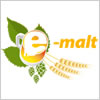Nouvelles de la société
- Fermentis et la Malterie du Château: Invitation à la Fermentis Academy le 15 decembre 2023
- Rejoignez La Malterie du Château® à BrauBeviale 2023 - la première exposition mondiale de brassage !
- Lettre ouverte pour les clients et les partenaires de la part de Jean-Louis Dourcy, Directeur Général de la Malterie du Château


United Kingdom: Managing spring malting barley to achieve 1.65-1.80%N grain, HGCA has recently published. HGCA-funded projects, led by TAG, have studied spring malting barley agronomy. The aim was to produce high yields with 1.65-1.80%N grain for home and export markets. The first project showed that nitrogen fertiliser rates need to be increased to compensate for the "nitrogen diluting" effect of strobilurin use.
The second project investigated the use of strobilurins with other agronomic factors: lower plant populations, nitrogen splits and timing as well as PGR use. All may help to achieve the %N grain required.
Specifications for malting barley quality have changed in recent years both for home use and export. Each year UK maltsters buy around one million tonnes of UK spring barley. Some of the home requirement, and also that for export, is for barley with higher %N than is acceptable for traditional ale or distilling.
Applying additional N fertiliser can lead to higher %N in spring varieties, but increases risks of disease and lodging. Traditionally, only 100-125kg N/ha has been used on malting crops. However, higher yields from strobilurin use dilute grain %N and trials, carried out by TAG, have shown that more N fertiliseris required (Table 1).
In these trials, target grain N was 1.65-1.80%. Without strobilurins a total nitrogen dose of 100-125kg/ha was adequate. But with strobilurins,
150kg/ha was still not sufficient.
As yield responses to strobilurins are cost-effective, a second HGCA-funded project studied managing crops treated with strobilurins. Growers applying them may need to use more N, but this will increase lodging risk. Potential ways to reduce this risk include:
a) reducing plant population by using lower seed rates
b) splitting N doses
c) changing N application timings
d) using growth regulators.
Previous HGCA-funded work by ADAS showed that, while yield increased with higher plant populations, grain %N fell. Therefore, for high %N grain, do not usually sow at high seed rates. Trials on light and medium soils used seed rates from 200-400 seeds/m2 and nitrogen from 100-175kg/ha.
Moddus (trinexapac-ethyl) or Terpal(2-chloroethylphosphonic acid plus mepiquat chloride) treatments were tested. PGR use was not cost-effective at low seed rates with high N rates. Using PGRs with relatively high N levels and high seed rates - despite low levels of lodging - resulted in yield increases. The highest yields were achieved when an application of Moddus at GS30 was followed by Terpal at GS39-45 on crops given 175kg N/ha or more. The effect was more consistent with variety Optic than with Cellar.
In the second project, optimum yield from a single PGR application was achieved at 175kg N/ha applied soon after crop emergence. Two or three N split applications gave even higher yields when 200kg/ha or more total N was applied. These rates, both single and split doses led to grain N above 1.9%.Therefore, 150-175kg N/ha is required to achieve specified grain N levels.
PGRs may have a role where higher levels of N are applied to achieve the target grain quality. Benefits of PGR use were most consistently seen when 175kg N.ha or more was applied.
HGCA has published the actions to achieve high (1.65-1.80) %N crops and minimise lodging risk:
Reduce plant population to around 200 plants/m2.
Base N use on RB209 (England) or Technical note T516 (Scotland), taking account of soil residual N.
Increase N rate to reflect higher yield expected if using strobilurins.
Apply N as one or two splits.
Apply at lease half the total N before or soon after emergence.
With low seed rate crops, do not apply a PGR.
With crops grown at high seed rate (not recommended) and for high %N grain, consider PGRs. (Always check acceptability with buyer.)
Revenir
E-malt.com, the global information source for the brewing and malting industry professionals. The bi-weekly E-malt.com Newsletters feature latest industry news, statistics in graphs and tables, world barley and malt prices, and other relevant information. Click here to get full access to E-malt.com. If you are a Castle Malting client, you can get free access to E-malt.com website and publications. Contact us for more information at marketing@castlemalting.com .





